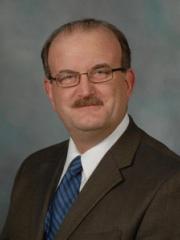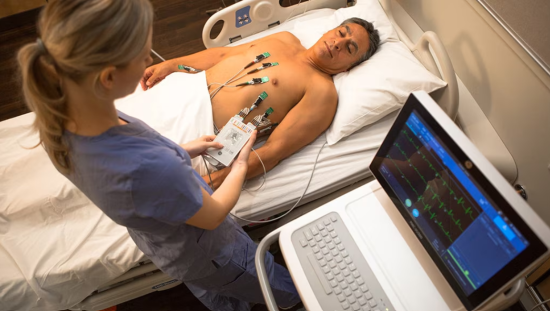An update on the latest American and ESAIC guidelines on monitoring neuromuscular block
In this podcast, Dr. Sorin Brull gives an update on the latest American and European guidelines on monitoring neuromuscular block.
Show Notes
Transcript
Speakers
Welcome to this podcast series produced by the Association of Anesthetists and sponsored by GE HealthCare. On the subject of neuromuscular monitoring in 2024, are we practicing to the highest possible standards?
In this podcast, Dr. Sorin Brull gives an update on the latest American and European guidelines on monitoring neuromuscular block.
Insights, interviews, and best practices by clinicians for clinicians. Welcome to GE HealthCare's Clinical View Podcast.
Andrew Mortimore:
Welcome everybody to this podcast produced by the Association of Anesthetists and sponsored by GE HealthCare. On the subject of neuromuscular monitoring in 2024, are we practicing to the highest possible standards? The podcast will cover four main areas.
Firstly, the pharmacology of reversal agents, their benefits and side effects, then an overview of strategies for reversing neuromuscular block, followed by an update on the latest American and European guidelines on monitoring neuromuscular block, and then finally, techniques of quantitative neuromuscular monitoring, which is the best equipment to use. We hope you will enjoy this podcast and gain something from it. We're now joined by Professor Sorin Brull, who is Professor Emeritus of Anesthesiology and Perioperative Medicine at Mayo Clinic College of Medicine and Science, and is a consultant in the Department of Anesthesiology at the Mayo Clinic in Florida.
So thank you very much, Sorin, for agreeing to join us in this companion podcast sponsored by GE HealthCare to the webinar that we did recently about NMT monitoring. You've agreed to cover for us the subject of the update on the latest American and European guidelines on monitoring neuromuscular block. So thank you very much for that, and are you okay for me to ask you the first question?
Dr. Sorin J. Brull:
Absolutely. I'm here for you.
Andrew Mortimore:
Thank you very much. So firstly, what are the most significant updates in the latest American and European guidelines for neuromuscular monitoring, and how do they address previous gaps in practice?
Dr. Sorin J. Brull:
Yeah. First of all, thank you for the opportunity to discuss these important points. The question is actually really important, and it's also a clinically relevant question because the guidelines were developed by a group of clinicians with experience in clinical care guidelines who had significant expertise in patient monitoring.
So the guidelines were really developed to answer the most important clinical questions regarding routine perioperative quantitative neuromuscular monitoring. So specifically, the authors addressed and made a set of eight recommendations. The first one was that they recommended against using clinical assessment.
So this is important. So let me repeat this. The American Society of Anesthesiologists recommends against using clinical assessment.
Instead, the guidelines recommend quantitative monitoring. They also confirm or they recommend confirmation of a train of four ratio greater than 0.9 prior to tracheal extubation. This is critically important because too many clinicians make the decision to extubate on flawed and inaccurate criteria.
For instance, they look at the ventilator bag, the way it contracts. They ask the patient to squeeze their hand or open their eyes. And if the patient can do all of this, the clinicians will then incorrectly assume that the patient is fully recovered and they will extubate the patient's trachea.
This practice really must change for the safety of our patients. Another recommendation is that we use the hand muscles, specifically the adductor pollicis for monitoring. And importantly, they also recommend against using the eye muscles for monitoring.
This is because previous work has shown that the use of eye muscles for monitoring actually results in a five-fold higher incidence of residual block because the eye muscles are stimulated directly, not via a nerve. And the twitches are not abolished by neuromuscular blocking agents. So the use of eye muscles for stimulation also will result in massive overdosing of neuromuscular blocking agents for the same reason, which is direct muscle stimulation.
Another recommendation is about the use of Sugamidex over Neostigmine at deep, moderate and shallow degrees of block. Not only because Sugammadex is faster and more complete at reversal, but because Neostigmine is not effective, or it's really only partially effective at reversing any block other than minimal block. And this minimal block is defined as a Train-of-four ratio between 0.4 and 0.9. Finally, the guidelines recommend that if other agents are used other than the typical Rocuronium or Vecuronium, for instance, such as Atracurium or Cisatracurium, then Neostigmine is recommended, again, only at a minimal block. As I said, a Train-of-four ratio between 0.4 and 0.9.
Andrew Mortimore:
Thank you very much for that answer, Sorin. So just moving on then to the next question. How have these guidelines influenced clinical practice, particularly in terms of standardizing the use of quantitative monitoring techniques?
Dr. Sorin J. Brull:
Yeah, so perhaps it would make sense to start by recognizing that one and a half years after the publication of the American and European guidelines, routine quantitative monitoring of the depth of block remains elusive. Although there has been some uptake by clinicians, the same reluctance, I would actually call it stubbornness, to using quantitative monitoring routinely remains. So in my view, and again, these are just my views, there are two overarching questions that we should try to answer.
Number one, what are the benefits of routine quantitative monitoring? And the second is, what are the costs or impediments to routine monitoring? So with these two questions in mind, allow me to summarize the most current clinical practice, at least the one that I'm familiar with.
Obviously, the statements I'll be making are generally true. And then there is a very wide range of practicing spanning from no monitoring at all to always monitoring. So generally speaking, many clinicians still believe monitoring is unnecessary.
And they continue to rely on their so-called clinical knowledge and experience. We actually know that acceleromyography or AMG monitors, such as the TofWatch, are more prevalent than the newer, recently introduced electromyography-based monitors. But really, the landscape seems to be changing as more clinicians are exposed to EMG and personally experience their ease of use and their reliability.
Next is, Sugammadex use and the doses that are being used are really amazingly high because they are given empirically, rather than being guided by the depth of neuromuscular block. And many clinicians actually opt to overdose rather than underdose in order to, they think, prevent residual neuromuscular block. The other thing is that pediatric monitors currently are used relatively rarely, although I have seen a significant renewed interest among pediatric anesthesiologists to use quantitative monitors.
Clinicians continue to claim that they need more data on quantitative monitoring cost versus benefit. And many of them seem to be unaware of the increasing body of published data that documents that, number one, quantitative monitoring is far superior to clinical or subjective evaluation. And number two, quantitative neuromuscular monitoring decreases the incidence of postoperative complications and that, number three, the savings from lower Sugammadex doses and by avoiding the complications are actually several folds higher than the cost.
So, in other words, quantitative monitoring is a cost saving practice, is not costly. So the entire argument is false. We need to better share this knowledge with our colleagues who mean well, but who lack the most recent information.
Finally, and I understand why these guidelines for monitoring exist, we must recognize that they're not a requirement.
Andrew Mortimore:
Thank you very much. Can I just ask quickly then, do you see in the future more and more settings where it's taken up, where more people start to employ the monitoring?
Dr. Sorin J. Brull:
Yeah, I do. And this is nothing new. I think we ran through the same problems when we're introducing capnography or pulse oximetry or depth of anesthesia monitoring.
You know, we as clinicians get very used to doing things a particular way, our own way. And anything that we're asked to change makes us a little bit uncomfortable because we're all about patient safety. And we know that what we do works well.
So we don't have a real impetus to change the practice. Interestingly, it's also been shown that the duration of uptake of new technology in medicine takes about 17 years. So I remain optimistic that even though the initial uptake has been relatively slow, more and more clinicians understand the need for quantitative monitoring.
And also with a recent development of at least four or five different quantitative neuromuscular monitoring that have hit the market, my hope and actually anticipation is that more and more people will start using quantitative monitoring, again, for the benefit of our patients.
Andrew Mortimore:
Thank you very much. And that is a positive outlook to end your section on. So I'd like to thank you very much, Sorin, on behalf of GE HealthCare, the sponsors of this podcast, and the Association of Anesthetists for sparing the time to let us benefit from your wisdom and knowledge.
So thank you very much for that.
Dr. Sorin J. Brull:
My pleasure. Thank you for the kind invitation.
Andrew Mortimore:
This concludes the podcast on neuromuscular monitoring in 2024. Are we practicing to the highest possible standards? And we would like to thank all of the speakers who have taken part.
We'd like to thank the Association of Anesthetists and we'd like to thank the sponsors, GE HealthCare.
Thank you for listening to Clinical View Podcasts, brought to you by GE HealthCare. Expand your view at clinicalview.gehealthcare.com. Thank you.

Prof Sorin J. Brull, MD, FCARCSI (Hon)
Professor Emeritus of Anesthesiology and Perioperative Medicine at the Mayo Clinic College of Medicine and Science, and Consultant. He completed anesthesiology residency and fellowships training at the Yale University and was Faculty in Yale School of Medicine for a decade.
Member of Anesthesia Patient Safety Foundation (APSF) for 25 years and Executive Committee and Board of Directors member; chaired APSF Scientific Evaluation Committee.
Past Editor of the Patient Safety Section for Anesthesia & Analgesia. Was selected member of the Anesthetic and Life Support Drugs Advisory Committee with the United States FDA.
Founder and Chief Medical Officer of a medical device company that seeks to eliminate residual neuromuscular block and postoperative complications; member of four scientific advisory boards of international companies.
Presented hundreds of lectures nationally and internationally, and has authored over 400 scientific works, including 186 peer-reviewed manuscripts, as well as editorials, letters, books, book chapters, educational videos, and abstracts.









